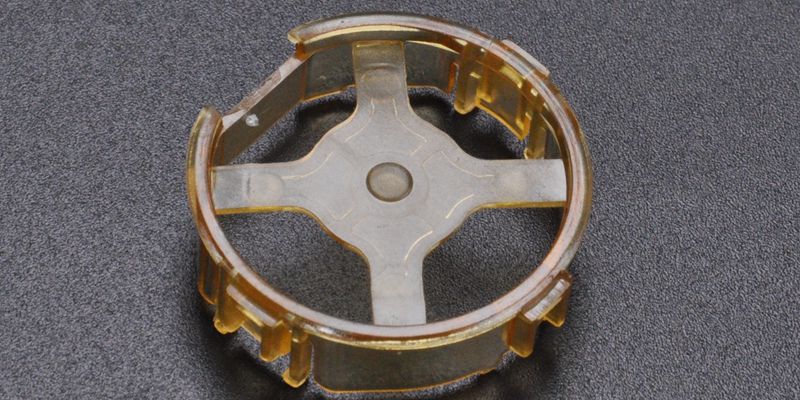- October 13, 2023
Ultem is a high-performance plastic material with great mechanical and chemical properties. It is a useful material for high-value industries such as aerospace, automotive, electronics handling, and transportation. Machining is one of the primary manufacturing techniques for Ultem production.
This article will focus on ultem CNC machining. We will explain what is Ultem, the different grades of ultem, and ultem machinability.
What is Ultem?
Let us begin with a simple question: what exactly is ultem? Polyetherimide (PEI brand name: ultem) is a plastic material with a transparent, amber-colored appearance and a wide range of desirable material properties.
Among its family of high-performance thermoplastic polymers, it is among the stronger and tougher ones, capable of maintaining its performance in extreme conditions. For comparison, it is quite similar to the popular thermoplastic PEEK (Poly ether ketone).
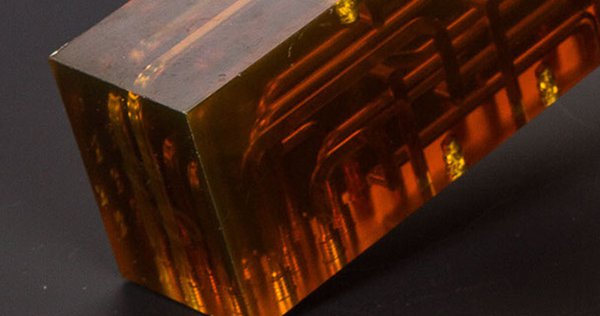
Material Properties of Ultem
There are various material properties of Ultem to understand what makes it superior and unique among thermoplastics, especially from a machinability perspective.
Thermal Stability
Ultem is a great material for high-temperature applications. It has remarkable thermal stability, which allows it to maintain its material properties at elevated temperatures of upwards of 200℃. Moreover, it also retains its rigidity at high temperatures, resisting deformations.
Chemical Resistance
Excellent chemical resistance is one of the most attractive properties of Ultem. It stands out among amorphous thermoplastics, having a higher capacity to resist chemical reactions with compounds like acids, oils, fats, alcohol, etc.
Additionally, it is also good at resisting stress cracking upon contact with different chemical compounds. This characteristic helps with ultem CNC machining as most coolants/lubricants are aqueous solutions of such compounds.
Mechanical Strength
Ultem features a strong collection of mechanical properties that render it very useful in high-strength applications. First and foremost, it is a strong material, with a tensile strength of 110 MPa. It also has high flexural and impact strength.
Furthermore, it is a hard thermoplastic. With a formidable Rockwell M hardness of 109, it can resist abrasion and surface wear and tear.
Electrical Insulation
Ultem is a great electrical insulator, featuring a high dielectric strength. This, in combination with its unique appearance, presents a great opportunity for product designers of electric products. It serves as an ideal material choice for making adaptors, clamps, and enclosures for electrical circuitry.
Dimensional Stability
The dimensional stability of Ultem is linked to its mechanical and thermal properties. Owing to high stiffness and hardness, products made by machining ultem are very accurate. In addition, its high thermal stability not only prevents excessive deformations during machining but also maintains dimensional stability at high temperatures.
Low Flammability
Ultem also boasts incredible flame resistance. It is compliant with the UL94 V-0 specification for flammability. Furthermore, it produces very small amounts of non-toxic smoke.
These are great qualities to have with high-temperature serviceability, especially when machining Ultem where temperatures tend to get high.
Different Grades of Ultem
Ultem is a versatile material with several grades, each one offering a different blend of qualities. In this section, we will discuss the common grades of ultem.
Ultem 1000
Ultem 1000 is the best-known Ultem grade. It offers all the aforementioned mechanical and chemical characteristics and has the classic transparent amber shade. However, it is also available in different colors in the market. Moreover, it also has opaque variants.
It is also a cost-effective thermoplastic for machining applications, offering high-temperature workability and flame retardation.
In addition, the Ultem 1000 is a very versatile material that is used for electronic enclosures, low- to medium-load automotive and aviation interior components, household items, and food production environments.
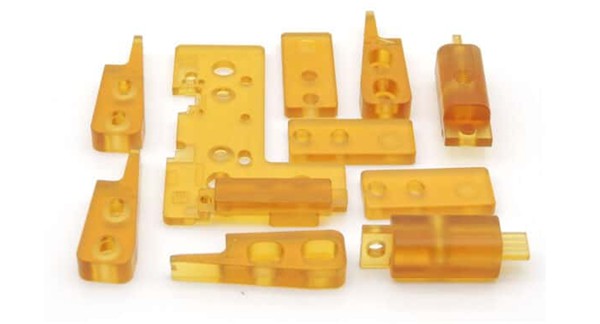
Ultem 2100
Ultem 2100 is a 10% glass fiber-filled variant of the standard ultem material. The addition of glass fibers improves its mechanical strength and rigidity, which is a good upgrade for high-intensity applications. Also, its chemical properties and general machinability are at par with other standard grades of ultem.
The rigidity and chemical resistance of Ultem make it the perfect material for hard packaging, automotive replacement parts, and electronic material handling purposes.
Ultem 2300
Ultem 2300 is the most well-known among the glass fiber-filled grades of ultem. Featuring a 30% glass fiber composition, it has incredible strength, rigidity, and dimensional stability, along with high thermal stability.
As a result, it is generally the prime choice of designers when they are looking to leverage the superior chemical properties of Ultem but require an additional boost to the mechanical properties.
Ultem 4000
Ultem 4000 is a high-performance ultem grade with glass fiber, PTFE, and graphite powder fillings. These additional compounds significantly improve its wear-resisting capabilities by decreasing the coefficient of friction. They act as an internal lubricant.
Its main applications include electronic device enclosures, personal accessory items, and the beverage industry, owing to its smooth, wear-resisting capabilities.
Challenges and Tips for Machining Ultem
Ultem has good machinability so it is not hard to machine like metals. However, it is not very easy to machine due to specific machining problems like thermal softening and stress cracking. Therefore, machinists have come up with some tips for the challenges they face while machining Ultem.
Annealing to Relieve Stress
Annealing is a heat treatment process where the stock is kept at specific temperatures for a specific amount of time to relieve internal stresses. It is a pre-machining process that greatly enhances ultem machinability.
Its amorphous nature makes it prone to stress cracking during machining, which is by far the most common challenge in ultem CNC machining. With a well-balanced annealing cycle, cracking risks can be lowered to manageable levels.
Coolant to Prevent Cracking
Thermal stability is a key property of Ultem, but it still requires coolant/lubricant application in risky operations. Moreover, glass-reinforced variants like Ultem 2100 and Ultem 2300 have slightly less thermal stability than standard Ultem grades, so coolant is recommended.
Depending upon the operation, machinists can choose anywhere between mists and flood cooling. Drilling, for example, requires an abundant coolant supply to prevent cracking.
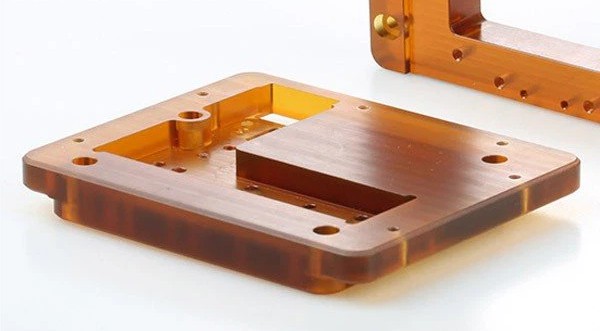
Sharp, Hard Cutting Tools
One of the things negatively affecting ultem machinability is its wear resistance properties. It dulls off the cutting edge of tools if the tool geometry and material are not optimized.
From the material side, high-speed steel (HSS) is a good enough material for standard Ultem like Ultem 1000. However, tougher CNC cutting tools like carbide may be more suitable for glass fiber-filled variants like Ultem 2300.
Chip Management
Ultem produces long, stringy chips. These can be problematic in the absence of appropriate chip management measures. Usually, flood coolant or vacuum suction from time to time does the job.
Moderate Cutting Parameters
While ultem machinability is high, it is sensitive to aggressive cutting action. The main reasons for this are its slight brittleness and cracking risks. High feeds and speeds can lead to fractures/cracks and high heat input.
Hence, the recommendation is to be a bit conservative and take some time to optimize cutting parameters to avoid quality issues.
Surface Finish Options for Ultem Machined Parts
There are different surface treatment options for Ultem CNC machining parts because it has great dimensional stability. Combined with a smooth surface, it becomes a viable lightweight substitute for low-strength metallic parts. Its main surface finish options include:
Machined
Ultem CNC machining is capable of achieving very fine surface finishes up to ± 1µm. For most applications, this is more than sufficient and the part does not need any additional finishing procedures except for some sanding/filing.
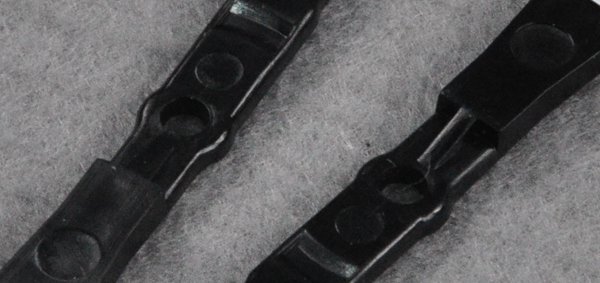
Bead Blasting
The most common and standard surface treatment of ultem machined parts is blasting. Machinists can achieve a fine surface finish with automatic operations. With the various grades of sanding media, the end result is quite good for medium roughness parts.
Tumbling
Tumbling is a process where the Ultem part is put inside a rotating vibratory chamber along with other media such as ceramic particles. The machine ‘tumbles’ the part for some time, during which the particles smooth the surface by flattening out protrusions. For ultem parts, generally, harder media like ceramics are used owing to their high hardness.
PEEK vs. Ultem Machining: What are the Differences?
Ultem and PEEK are very similar in their material properties. Consequently, they also have similar machinability characteristics. Perhaps the starkest difference between them is price: PEEK is significantly more expensive than Ultem.
In general, PEEK is slightly better than ultem in terms of tensile strength, impact resistance, and high-temperature resistance. Therefore, PEEK is a bit more difficult and energy-intensive to machine than Ultem. Its higher friction and wear characteristics cause higher tool wear and cutting temperatures.
Consequently, both these materials are still very much like each other in terms of machinability. The same precautions are taken for both: annealing, sharp-edged tool selection, and cooling. However, PEEK, being a bit tougher, oftentimes requires more care.
For example, HSS tooling is suitable for low-strength grades of Ultem like Ultem 1000, but for PEEK, experts always recommend using carbide or even diamond-tip tooling. Similarly, PEEK requires better cooling in all cases while ultem can be machined without flood cooling.
Applications of Machined Ultem Parts
Ultem CNC machining has a wide range of industrial applications, ranging from precision aerospace to consumer appliances. Some of its major applications are as follows:
- Semiconductor equipment
- Washers, seals
- Medical equipment
- Electronic connectors and enclosures
- Aircraft interior components
Need Ultem CNC Machined Parts?
At WayKen, we offer plastic CNC machining services with a specialization in Ultem CNC machined parts. Our one-stop CNC machining capabilities and commitment to quality, make us a trusted partner for delivering machined plastic prototypes and parts.
We also understand the importance of machining technology and lead time when it comes to various projects. Our efficient workflow and project management ensure timely delivery without affecting the machined parts. At the same time, Wayken strives to provide cost-effective solutions, and our competitive pricing ensures we can meet your specific Ultem machining requirements.
Conclusion
Ultem is a high-performance thermoplastic with a range of favorable properties including high strength, thermal and chemical stability, and most importantly, machinability. Owing to the numerous grades of ultem, it is the perfect choice for a variety of industrial and commercial applications.
FAQs
Is Ultem machinable?
As long as very sharp-edged tools, appropriate cooling, and low-to-moderate parameters are used, Ultem is an easily machined material, posing no significant challenges.
How does Ultem compare with PEEK?
Ultem and PEEK are comparable materials. While PEEK is the slightly stronger, more durable one, Ultem is more cost-effective with not a huge compromise in material properties. Ultem is also easier to machine than PEEK.
What are the benefits of Ultem?
Ultem has numerous beneficial material properties. These include high strength, impact resistance, and hardness. Moreover, it is thermally and chemically stable, maintaining its material properties and form in high temperatures as well as when exposed to compounds like acids, alcohols, fats, and oils.

